
Kodak
What’s the best kind of camera? Some people will say it’s a Nikon camera; others will claim it’s a Canon. And then there are people who debate DSLRs vs mirrorless. But in reality, any photographer will tell you that it’s whatever one you actually have with you when you need it, because you can’t take pictures with a camera that’s at home in the closet. For many years, the role of “the one you have right now” was filled by point & shoot cameras, because they were a lot easier to carry than an SLR. These days, of course, most people use their smartphones to take pictures. But the best point and shoot cameras are still a great step “up,” with better resolution, image quality, and a huge variety of features for taking great pictures.
Point & shoot cameras fill an important niche. Smartphone cameras are awesome mainly because of their ubiquity, and SLRs and mirrorless cameras are the choice of pros and serious enthusiasts. But most of us fall somewhere in between — we want great photos but don’t want to carry a bulky backpack and need to study the manual to get great photos. That’s why this list exists — I’ve rounded up the 11 top point and shoot cameras here so you can make a smart choice to take better photos without needing a sherpa or a degree in photography. There are models ranging from sub-$100 casual shooter models to beefy “superzooms” which can cost you over $1,000. There’s something here for everyone, whether you want to casually take photos and share them on Facebook or edit them in a photo editor on a supercharged laptop.
Don’t know your way around a camera but want to learn? Be sure to scroll down to the bottom of this article, where I’ve got some advice for you as you shop for a new camera. What do you need to know about point & shoot cameras, and what makes one better than another for your needs? I’ve got the scoop. In the meantime, here are the best choices for a point & shoot camera today.
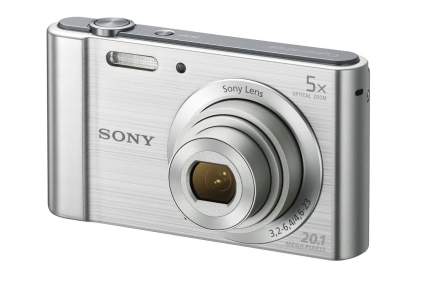
|
Amazon Customer Reviews
|
Price: $479.99 Shop at Amazon | Shop now Read our review |
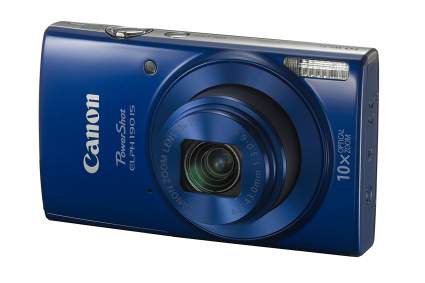
|
Amazon Customer Reviews
|
Price: $299.00 Shop at Amazon | Shop now Read our review |
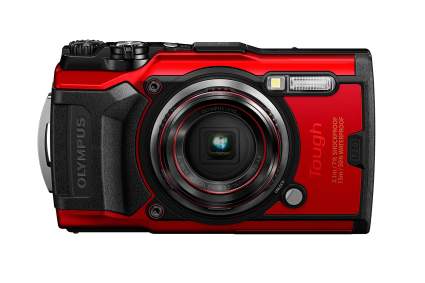
|
Amazon Customer Reviews
|
Price: $489.00 Shop at Amazon | Shop now Read our review |
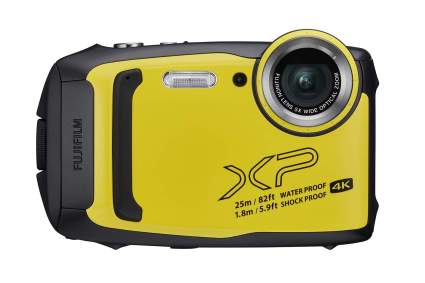
|
Amazon Customer Reviews
|
Price: $549.00 Shop at Amazon | Shop now Read our review |
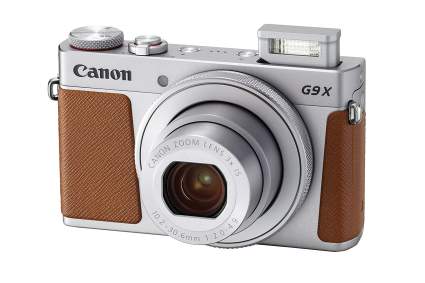
|
Amazon Customer Reviews
|
Price: $699.00 Shop at Amazon | Shop now Read our review |
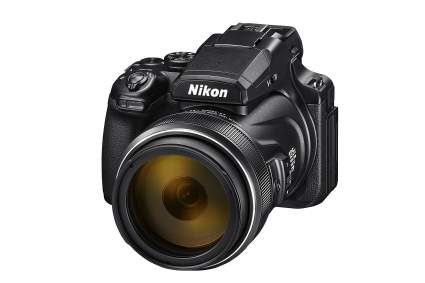
|
Amazon Customer Reviews
|
Price: $1,709.95 Shop at Amazon | Shop now Read our review |
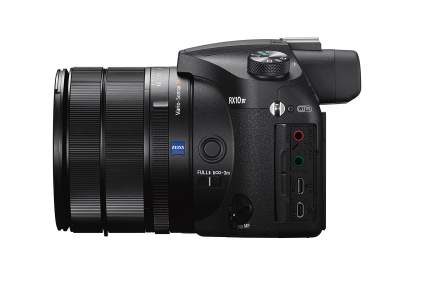
|
Amazon Customer Reviews
|
Price: $1,698.00 Shop at Amazon | Shop now Read our review |

|
Amazon Customer Reviews
|
Price: $99.99 Shop at Amazon | Shop now Read our review |
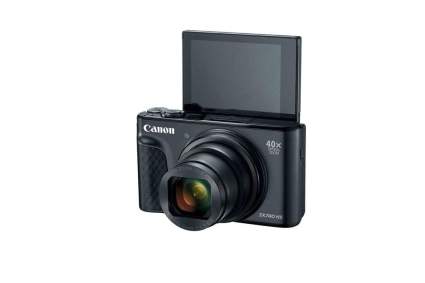
|
Amazon Customer Reviews
|
Price: $389.99 Shop at Amazon | Shop now Read our review |
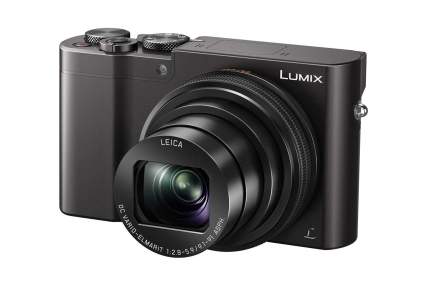
|
Amazon Customer Reviews
|
Price: $597.99 Shop at Amazon | Shop now Read our review |

|
Amazon Customer Reviews
|
Price: $1,298.00 Shop at Amazon | Shop now Read our review |
-
1. Sony CyberShot DSC-W800
Pros:- 5x optical zoom
- 720p video
- Inexpensive
Cons:- Very basic camera
- LCD display is just 2.7 inches
- No advanced features
Style: Compact | Zoom: 5x optical | Image resolution: 20.1 megapixels | Video resolution: 720p | Dimensions: 1.97 x 2.13 x 0.87 inches | Weight: 4.5 ounces
If you want to step from your smartphone camera but are looking for budget-priced options, the Sony CyberShot DSC-W800 is a solid option that would serve a beginner photographer well. This is a very basic point & shoot model; you won’t find a lot of bells and whistles here, but you will get you a camera that costs just a tick over $100.
Aside from price, this camera’s claim to fame is its 5x optical zoom, which gives you the 35mm camera equivalent of 26-130mm focal length range. Starting down at 26mm, that gives you a fairly wide range bottom end. It also uses its 5-megapixel sensor to take 20.1-megapixel images, which is more than most any smartphone can muster. Want to record video? The DSC-W800in stores video in high definition at 720p (there’s a dedicated movie mode, which makes it easy to start filming without fiddling with changing settings).
Otherwise, this camera is about as simple as they come. The controls are minimal, and the 2.7-inch LCD display is adequate but not best-in-class. The whole thing slips easily in your pocket. Consider it a great starter camera.
Find more Sony CyberShot DSCW800 information and reviews here.
-
2. Canon PowerShot ELPH 190
Pros:- 10x optical zoom
- Smart image stabilization
- Over a dozen scene modes
Cons:- Slow continuous shooting mode
- Video limited to 720p
- Noisy ISO performance
Style: Compact | Zoom: 10x optical | Image resolution: 20 megapixels | Video resolution: 720p | Dimensions: 0.90 x 3.80 x 2.20 inches | Weight: 4.9 ounces
The Canon PowerShot ELPH 190 is a compelling blend of compact form factor, low price and generous features. If I was looking for a point & shoot camera for under $200, this is very likely the camera I would choose. Throw in the fact that it’s available in a trio of eye-catching colors, and you have a recipe for great pocket photography.
For starters, you get a generous 10x optical zoom — one that ranges from a wide 24mm to a decently deep 240mm. Helping keep everything steady is an optical image stabilizer to minimize the inevitable shaky hands at the zoomier end of the spectrum. Moreover, the camera includes Canon’s Intelligent IS, which applies different amounts of image stabilization based on how you’re using the camera — like panning, macro photography, normal, and tripod, plus additional image stabilization for different video recording situations.
To help you choose the best settings, the ELPH 190 has over a dozen smart scene modes — you can choose from scenes like a face self-timer that waits for everyone to be ready before taking a group shot, low light photography, fireworks, a “miniature” effect that gives y6our photos that dollhouse aesthetic, and more. You can also shoot video at 720p.
Getting photos off the camera is also simplified — the ELPH includes WI-Fi and NFC to quickly and easily download photos from the camera without fiddling with memory cards.
Find more Canon PowerShot ELPH 190 information and reviews here.
-
3. Olympus Tough TG-6 Waterproof Camera
Pros:- Underwater photography to 50 feet
- Extremely rugged
- 4K video
Cons:- Small 1/2.3-inch sensor
- Shoots 12 megapixel photos
- No scene modes
Style: Rugged/Waterproof | Zoom: 4x optical | Image resolution: 12 megapixel | Video resolution: 4K | Dimensions: 2.60 x 4.40 x 1.30 inches | Weight: 9 ounces
If you’re an adventurous outdoorsy person, then the Olympus Tough TG-6 can go places you’d never dream of taking your smartphone. It’s designed to be a rugged and waterproof camera — it is waterproof, shockproof, dustproof and crushproof, so much so that you can literally use it underwater without a special housing. That makes this point & shoot suitable for snorkeling and even scuba to depths of 50 feet.
There are some trade-offs, of course. Olympus built this rugged frame around a small 1/2.3-inch sensor, which affects its light-gathering capabilities and makes for some slightly noisier images when you are shooting in low light or high ISO. And the maximum image size is 12 megapixels, about the same as many smartphones. But that’s far from a deal-breaker. The TG-6 delivers power and features where it counts — you get a 4x optical zoom that goes from 25-100mm, 4K video shooting, and a speedy 20fps burst mode for stopping a lot of action in still photos. You can focus all the way down to macro mode for excellent microscopic photos (both above and below water) and the camera has a slew of shooting modes, from fully automatic to program and aperture priority, along with modes intended to simplify shooting underwater.
There are few point & shoot cameras better poised for adventure than the TG-6.
-
4. Fujifilm FinePix XP140 Waterproof Digital Camera
Pros:- Waterproof to 82 feet
- 4K video
- Bluetooth for wireless photo downloads
Cons:- Narrow selection of shooting modes
- Small 1/2.3-inch CMOS sensor
- Onlyy 15fps continuous shooting
Style: Rugged/Waterproof | Zoom: 5x optical | Image resolution: 16 megapixel | Video resolution: 4K | Dimensions: 4.3 x 2.7 x 1.0 inches | Weight: 7.3 ounces
Need a rugged camera for hiking trips or a waterproof model for snorkeling — but don’t want to pony up for the somewhat pricey Olympus Tough TG-6 (also on this list)? Well, not a problem, because the Fujifilm FinePix XP140 costs about half, coming in around $150. Yet it boasts more or less the same survivability (even besting the Olympus at its waterproof rating). No, the Fuji can’t match all of Olympus’s features, but even so the XP140 might be all you need.
First, let’s talk about its overall ruggedness. This pocket-sized camera can stand up to a fair bit of abuse, waterproof to 82 feet (which is close to the maximum depth allowed for recreational diving) as well as shockproof, freeze-resistant and dustproof. Even so, it has a 5x optical zoom that spans the range from 28-140mm (using 235mm equivalent focal lengths) and the ability to shoot 16-megapixel stills and 4K video with built-in optical image stabilization.
The camera has fewer offerings in the exposure mode department, though. Of course, it has excellent full-auto point and shoot sensibilities. An eye detector feature improves portraits by automatically focusing on the subject’s eyes. There’s also a speedy 15 fps continuous shooting mode for action photography. But there are no program or manual controls for tweaking the exposure settings.
That said, the XP140 includes Bluetooth and can automatically download photos to your phone, tablet, or even printer.
Find more Fujifilm FinePix XP140 information and reviews here.
-
5. Canon PowerShot G9 X Mark II
Pros:- Large 1-inch sensor
- Large touch-screen LCD
- Built-in neuttral density filter
Cons:- No 4K video
- A little pricey
- Zoom is only 3x
Style: Compact | Zoom: 3x optical | Image resolution: 20.1 megapixel | Video resolution: 1080p | Dimensions: .9 in. x 2.3 in. x 1.2 inches | Weight: 7.3 ounces
Canon’s PowerShot G9 X Mark II is remarkable for a number of reasons. If you have a love of older cameras, for example, you’ll be drawn to the traditional styling of this point & shoot compact camera, complete with its two-tone look. But some of the best features are under the covers, even if the camera isn’t on the bleeding edge of features and specs. The large one-inch sensor, for example, captures six times the light of the iPhone’s sensor and four times as much as other compact cameras with small 1/2.3-inch sensors. And a 3-inch LCD on the back gives you a large viewscreen for framing and reviewing photos. Those are great, but the camera has a mere 3x optical zoom, ranging from a scant 28-84mm.
The camera shoots 21-megapixel images, and you can shoot up to 8fps — not a speed demon, so this might not be the best choice for action photography. And while you can shoot 720p and 1080p video, the camera doesn’t record 4K. But you have a lot of exposure control options. The control dial lets you choose full auto, aperture and shutter priority, as well as program and exposure compensation modes, not unlike a full SLR. There’s even a manual mode where you get to set shutter speed and aperture independently. The G9 X Mark II even has a built-in neutral density filter you can employ to take longer exposures in daylight.
For connectivity, the camera is equipped with the full trifecta: Wi-Fi, NFC and Bluetooth.
Find more Canon PowerShot G9 X Mark II information and reviews here.
-
6. Nikon CoolPix P1000
Pros:- Massive 125x optical zoom
- 16.7 megapixel resoltuion
- RAW support
Cons:- Large, bulky and heavy
- Expensive
- Can only take up to about 7 images at a time
Style: Superzoom | Zoom: 125x optical | Image resolution: 16.7 megapixels | Video resolution: 4K | Dimensions: 5.76 x 7.14 x 4.68 inches | Weight: 3.1 pounds
Not all point & shoot cameras slide into your pocket, and the Nikon CoolPix P1000 is a superzoom that, thanks to the enormous amount of glass in the lens barrel, is shaped more like an SLR than a compact camera. Let’s get this out of the way right up front: The camera has a 125x optical zoom, spanning from 24-3000mm. That’s enough magnification to be useful for astrophotography without a telescope. To steady this crazy amount of zoom, the camera has a Dual Detect Optical Vibration Reduction system that’s designed to independently stabilize both horizontal and vertical movement. Because the zoom is so enormous, it includes a handy “snapback zoom” button that helps you quickly re-find something you’d focused on but accidentally lost.
In addition to the expected full automatic exposure mode, you can shoot in full manual mode as well. The camera can snap up to 7fps in short bursts, and includes a variety of handy modes like macro, time-lapse, and more. There’s a bird mode for optimizing bird photography for example, as well as a moon mode for capturing details on the surface of the moon. For serious shooters, the P1000 even captures in RAW mode as well as JPGs, which is handy for exiting in programs like Adobe Lightroom.
The camera includes a viewfinder, as well as a flip-out LED display, and the camera syncs with your phone and PC via Bluetooth and Wi-Fi.
-
7. Sony Cyber‑Shot RX10 IV
Pros:- Large 1-inch sensor
- 25x optical zoom
- Phase detect autofocus
Cons:- Ludicrously expensive
- No built-in neutral density filter
- A little large
Style: Superzoom | Zoom: 25x optical | Image resolution: 20.1 megapixels | Video resolution: 4K| Dimensions: 5.22 x 3.70 x 5.02 inches | Weight: 2.3 pounds
The Sony Cyber‑Shot RX10 IV is a mash-up of a lot of things that photo-enthusiasts crave in a point & shoot camera. It has a generous25x optical zoom, and large 1-inch imaging sensor, RAW image capture for fiddling around with photos on the desktop, and 4K video capture. In fact, the only things not to like here are the expense, which is kind of ludicrous, and its size. But if you’re serious about photography, this camera is hard to beat without stepping up to a full-size SLR.
Sony claims this camera includes the world’s fastest autofocus mechanism — a blinding 0.03 seconds. The camera’s phase detection focusing technology lets you shoot up to 24fps while continuing to track a moving subject. Combine that with the camera’s 25x optical zoom and image stabilization, and you have a formidable tool for zooming from 24-600mm and capturing moving distant subjects, close-up wide-angle shots, and everything in between. In fact, the camera also has a capable macros mode that focuses down to 1.2 inches.
When it comes to exposure modes, the camera has full auto, of course, but also a full range of options that include program mode, aperture and shutter priority, and movie mode and a variety of scene selections. Sony’s super-slow high frame rate video mode lets you capture video 40 times slower than real-time.
The rear of the camera includes an electronic viewfinder in addition to a 3-inch touch LCD that consumes much of the camera’s back. And for connectivity, the camera includes everything: Wi-Fi, Bluetooth and NFC.
Find more Sony Cyber‑Shot RX10 IV information and reviews here.
-
8. KODAK Smile Instant Print Digital Camera
Pros:- Instant printing
- Fun and casual -- great for kids
- Affordable
Cons:- Small, mediocre prints
- No video
- Only 10 megapixels
Style: Compact | Zoom: None | Image resolution: 10 megapixels | Video resolution: None | Dimensions: 4.8 x 3.1 x 0.9 inches | Weight: 16 ounces
Kodak has a storied history in film photography, and it’s a shame the company was unable to navigate into the world of digital 20 years ago; what’s left is a shadow of its former self. Even so, Kodak still turns out the occasional gem, like the Kodak Smile Instant Print Digital Camera, a throwback instant-printing camera that’s reminiscent of the Kodak Instamatic.
There’s not a lot here for serious shooters, but the Smile is a fun, casual camera for kids and adults who aren’t taking things too seriously. It shoots 10-megapixel images with a fixed focal length of 8mm, which is 35mm equivalent to about 40mm, or a “normal” lens. The camera is more than just a camera, though. It has a built-in ZINK printer that spits out prints on 2×3-inch photo paper. ZINK’s printers, as the name implies, use a special paper that uses no ink, so there are never any inks or other consumables to replace (aside from the paper itself). That said, you are locked into buying that particular specialty paper.
The design is simple and friendly, with a cool sliding mechanism that reveals the usually hidden camera and printer controls. There’s a small LCD display that shows you a camera preview and other details, and prints take just seconds. There’s room for just 5 photos on the internal memory, though, so you’ll need to add a memory card to store any practical amount of photos. That said, you can get about 40 prints on a single charge of the camera battery.
-
9. Canon PowerShot SX740 HS
Pros:- Deep 40x zoom
- 4K video and time-lapse video
- Pocket sized
Cons:- LCD display isn't a trouchscreen
- No RAW file format
- No vierwfinder
Style: Compact | Zoom: 40x optical | Image resolution: 20.3 megapixel | Video resolution: 4K | Dimensions: 1.60 x 4.30 x 4.30 inches | Weight: 10.5 ounces
If you’re looking for something pocket-sized yet packing a substantial amount of the power you’ll find in oversized, SLR-shaped superzooms, perhaps what you want is the Canon PowerShot SX740 HS. This camera is still quite compact, though it bulges a bit in most pockets, but it has an impressive 40x optical zoom and a suite of other features to match.
Helping out the deep 40x zoom, which stretches from 24-960mm in 35mm equivalent focal lengths, is optical image stabilization and a feature called “zoom framing assist,” which makes it easier to track a moving subject when zoomed way in. You can simply hold the framing assist button and the camera zooms out a bit to help you recenter, then release the button to return to the previous zoom level. It’s kind of genius, and too bad more cameras don’t do that.
In addition to shooting 20-megapixel stills, the PowerShot SX740 HS can shoot 4K video and — this is cool — 4K time-lapse movies. The camera works in full-auto mode, of course, as any self-respecting point and shoot does, but also includes a wealth of exposure controls including Program mode, shutter, and aperture priority, full manual, and a large collection of scene modes. The back of the camera has a large 3-inch LCD display that flips all the way around to face forward. That makes it a handy tool not just for selfies, but for bloggers and anyone else who wants to record or broadcast themselves. And don’t worry about transferring files — the camera includes both Bluetooth and Wi-Fi.
Find more Canon PowerShot SX740 HS information and reviews here.
-
10. Panasonic LUMIX ZS100
Pros:- Post focus and 4K Live Cropping
- Large 1-inch sensor
- RAW capture
Cons:- "Only" 10x optical zoom
- LCD doesn't tilt or flip
- Viewfinder is small
Style: Compact | Zoom: 10x optical | Image resolution: 20.1 megapixel | Video resolution: 4K | Dimensions: 1.70 x 4.40 x 2.50 inches | Weight: 11.2 ounces
The Panasonic LUMIX ZS100 has been around since 2016. It might be getting a little long in the tooth, but newer isn’t always better, and this camera remains a very strong model in the compact point & shoot category. You get a 10x optical zoom (that’s 25-250mm) on a large 1-inch sensor, and the camera creates large 20-megapixel images. The camera itself is quite pocketable, with an electronic viewfinder and 3-inch LCD display in back. Unfortunately, the LCD is fixed in place and won’t tilt or flip.
The camera has some cool features, like something Panasonic calls Post Focus, a form of focus stacking which snags multiple pictures as different focuses, so you only press the shutter release once and get to pick the picture you like the best. For exposure control, the camera includes all the usual modes, from full auto to full manual, with everything in between, including an array of scene modes. You can record video in 4K, including a cool feature called 4K Live Cropping, where the recording frame moves within the camera view while the camera itself stays fixed. It’s an easy way to get smooth and stable panning and to focus on something that’s not in the center of the viewfinder. And that’s just for starters — the camera also has a low light autofocus mode for achieving a solid, dependable focus even in moonlight, as well as other conveniences, like the ability to capture RAW images.
Find more Panasonic LUMIX ZS100 information and reviews here.
-
11. Sony RX100 VII
Pros:- Large 1-inch sensor
- Articulated touch LCD
- 20 fps capture with tracking
Cons:- Quite pricey
- No video recording while camera is clearing buffer
- "Only" an 8x zoom
Style: Compact | Zoom: 8x optical | Image resolution: 20 megapixel | Video resolution: 4K | Dimensions: 4.0 x 2.29 x 1.68 inches | Weight: 10.7 ounces
The Sony RX100 VII doesn’t have the longest zoom out there — that’s obvious, since it’s hardly a superzoom like some of the other cameras in this roundup. But a superzoom isn’t a general-purpose camera, and if you want a camera you’ll find a reason to slip in your pocket every day, this is it. The RX100 VII is built on a large 1-inch sensor that shoots 20 megapixel images, and you can record full 4K video as well. Sony includes both an electronic viewfinder (which is hidden in the body by default but pops up when needed) and large 3-inch LCD display. The display is touch-sensitive, tilts and flips, which makes this one of the more versatile cameras you’ll run across.
While the RX100 VII can be used in Auto mode, you have the option to shoot in aperture or shutter priority, program, manual mode, or any of the camera’s many screen modes. An optical image stabilizer helps steady the camera, especially the extremes of the 8x optical zoom, and the camera can keep up with action photgraphy at up to 20fps. Real-time eye tracking is a feature we’re starting to see in some cameras, but the RX100 VII can do it for both human and animal subjects.
The camera offers a full range of connectivity, including Bluetooth and Wi-Fi, and you can use Sony’s mobile app as a sort of remote control for the camera — very convenient. And if you get serious about shooting video with this camera, you’ll find it has an external microphone input for capturing higher quality audio.
What to Look for When Shopping for a Point & Shoot Camera
The point & shoot category is an interesting one. In recent years, as the digital camera category has deflated a bit because of smartphone cameras, point and shoots have become a catch-all category that encapsulates everything in between smartphones and pro-level SLRs and mirrorless cameras. The Point and shoot category isn't even synonymous with "compact" -- not all point & shoot models fit in your pocket, for example. At least, not unless you have enormous pockets.
So what are the major kinds of point & shoot cameras, and hence the major things to look for when shopping? This isn't a definitive set of categories, but it will help you figure out what's important to you. Here's a quick guide.
Compact. As I said, not all point & shoot cameras are "compact," but many -- if not most -- are. They will slip into your pocket almost as easily as a smartphone, and that makes them highly portable and discreet. If you need a camera that's first and foremost pocketable, keep an eye out on compact models.
Cost. Cameras vary dramatically in cost, from under $100 to well over $1,000 -- and I'm talking point & shoot cameras here. In fact, the price of high-end point & shoot models rival or exceed the cost of modestly priced SLRs and mirrorless cameras. But you get what you pay for, and sometimes you need to invest to get the features you want. Usually, it's the glass you're paying for -- particularly, superzoom cameras will cost a premium.
Zooms and superzooms. Most point & shoot cameras, especially the moderately priced ones, have limited zoom lenses. But if you want a deep zoom range, you'll need to leave the realm of compact cameras and pock something that has a long barrel. Superzoom cameras are generally defined as cameras with a 10x or higher zoom range. A superzoom camera with an 18x zoom range, for example, might have the same general form factor as an SLR, but the lenses are obviously not removable or interchangeable.
Rugged and waterproof. Some point & shoot cameras lean into being rugged and equipped for use in the great outdoors. Ruggedness generally makes a camera a bit bulky, and you can even find some point & shoot cameras that are waterproof enough to use in pools and snorkeling without any kind of special enclosure.
What Point & Shoot Cameras Can't Do
A great point & shoot camera can really bridge the gap between a smartphone and an SLR. It can give you great image quality, a better lens with much higher optical magnification (which is always better than digital zoom) and great extra features.
But by their very definition, point & shoot cameras generally don't necessarily give you full manual control over the exposure settings. Some point & shoot cameras do, and that's a great added benefit -- but don't count on it. Nor are the lenses interchangeable -- for that, you need an SLR or mirrorless camera.
The Best Value in a Point & Shoot Camera
The good news is that there's an abundance of awesomeness in point & shoot cameras these days; it's hard to go wrong with almost any model. It's really a matter of picking the right one for you. Kodak's Smile, for example, is best for kids and, at the risk of offending a demographic, grandmas -- it's simply not versatile enough for anyone who takes photography seriously. But for playing around? Gold.
If I could only buy one camera for the rest of my life and money was no object, it's easy: The Sony RX100 VII is a magical blend of portability, image quality, and features.
But for most people, the right camera is probably going to be a much more affordable camera. The single best value is the Canon PowerShot Elph 190, but if your budget permits, I'd suggest that the Panasonic Lumix ZS100 has a lot more to offer.
See Also:
9 Best DSLR Cameras for Beginners
11 Best Nikon Cameras Buyer’s Guide